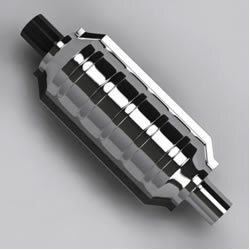Both trophies and medals are characterized as the representation of victory in some competitive event. Particularly, its use has become quite common in sporting events.
The meaning acquired by the gold, silver and bronze medals, which represent the achievements of first, second and third places in the Olympic Games, won a space larger than its initial trigger, to the point where it is very common to hear children, during everyday games, say: “I won gold”, instead of saying they won the Just kidding.
Historically, specifically in antiquity, athletes who won events at the Olympic Games received a laurel wreath, as a symbol of victory, and were regarded as heroes in their region. With the insertion of the Olympic Games in modern times, the type of award was modified: following the connotation of value acquired by noble metals, the symbol of a winner refers to gold; a near silver winner; and third place to bronze.
In the case of the Soccer World Cup, a competition that was recently started in 1930, the element of victory, so coveted, is the trophy. The first trophy of the International Football Federation – FIFA – for the World Cup was the “Jules Rimet Cup”. This trophy was designed by Abel Lafleur, from a lapis lazuli base, featured the Greek goddess Nique and, on top of her, an octagonal-shaped cup. The material used was gold and silver.
Do not stop now... There's more after the advertising ;)
Only the selection that won the competition three times was allowed permanent possession. Soon, the only country to gain possession of the cup was Brazil, but it was soon stolen and never found.
Jules Rimet's replacement took place with the “FIFA World Cup”, in 1974. Permanent possession of this trophy is not permitted under any circumstances. The name of the World Cup winning team is written on the base of the Cup. The constitution of the FIFA World Cup was created by Silvio Gazzaniga and produced by Milano Bertoni. Its base is made of malachite and the cup is made of gold, whose shape is the planet Earth held by two men.
By Paula Rondinelli
Brazil School Collaborator
Graduated in Physical Education from the São Paulo State University “Júlio de Mesquita Filho” – UNESP
Master in Motricity Sciences from the São Paulo State University “Júlio de Mesquita Filho” – UNESP
PhD student in Latin American Integration at the University of São Paulo - USP
world Cup - Soccer - sports - PE - Brazil School
Would you like to reference this text in a school or academic work? Look:
RONDINELLI, Paula. "Trophies and Medals"; Brazil School. Available in: https://brasilescola.uol.com.br/educacao-fisica/trofeu.htm. Accessed on June 29, 2021.


